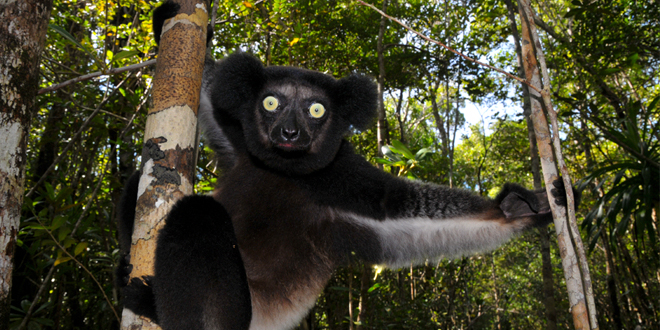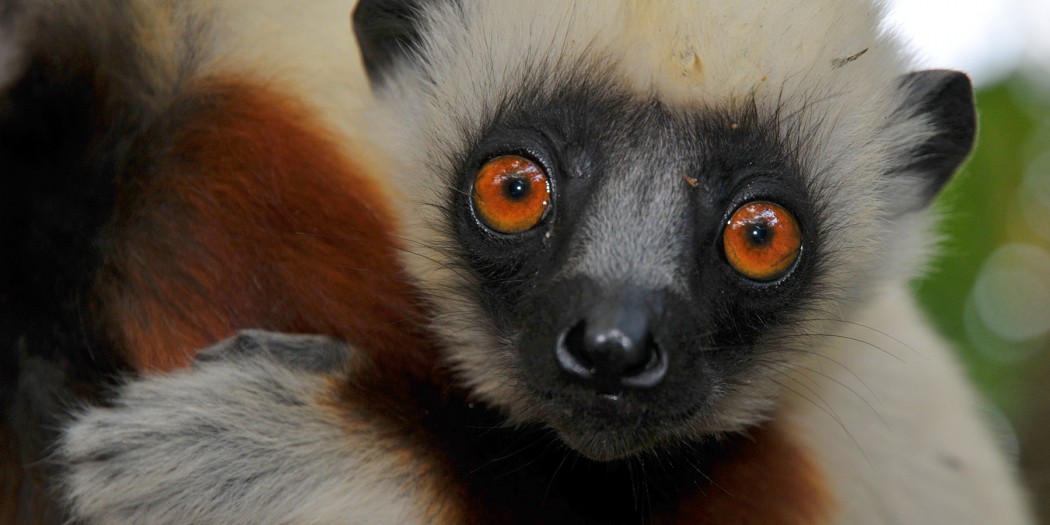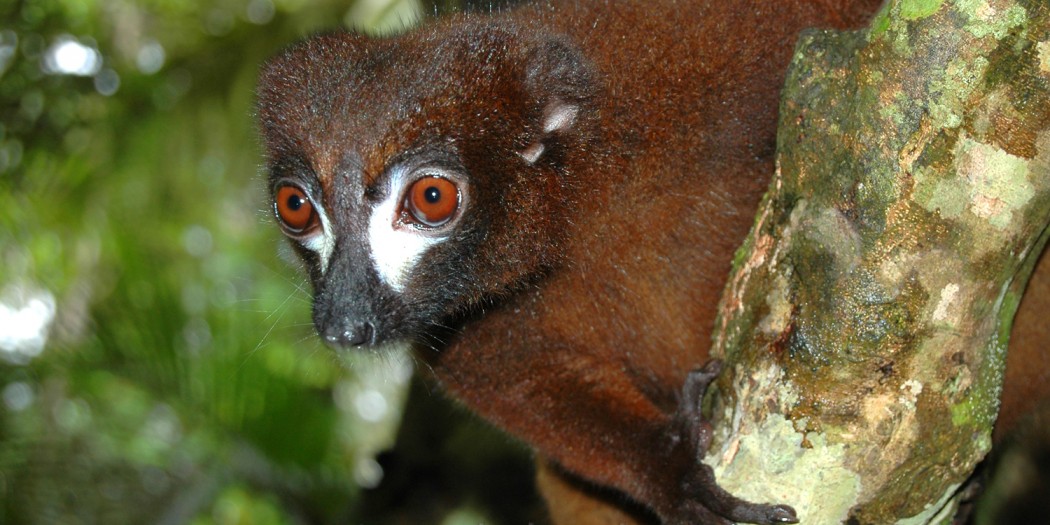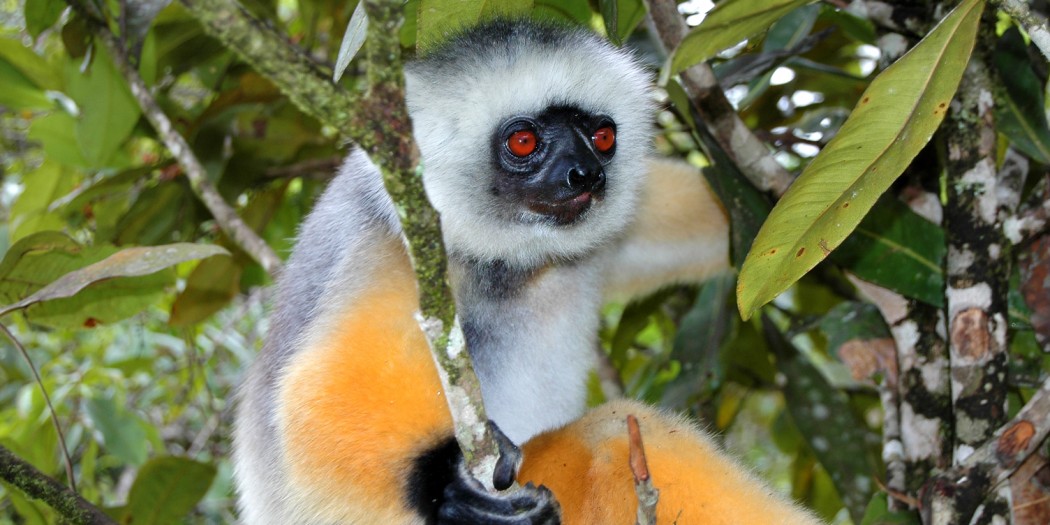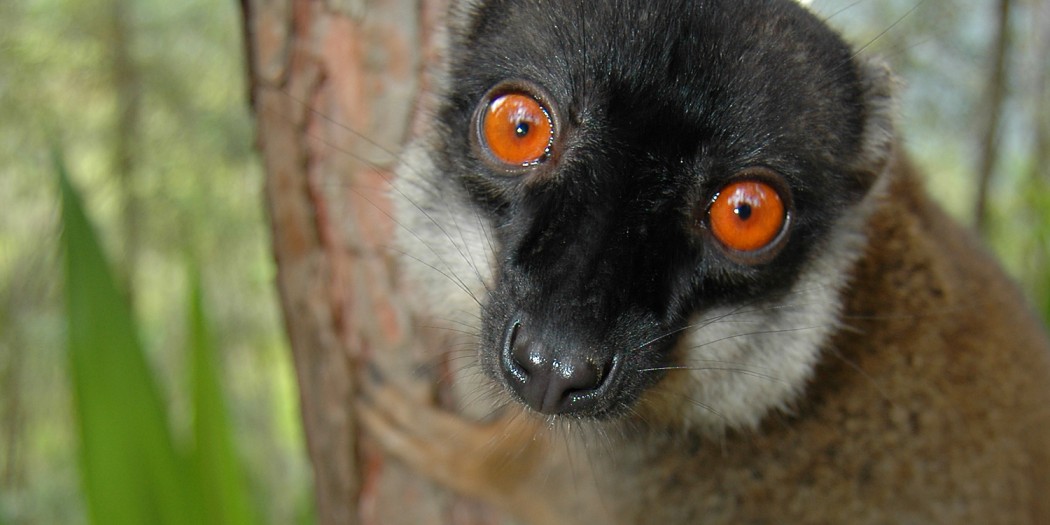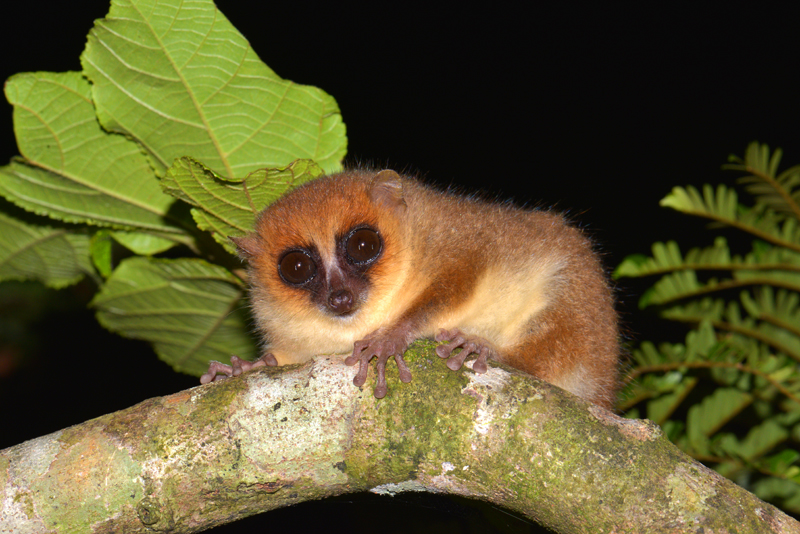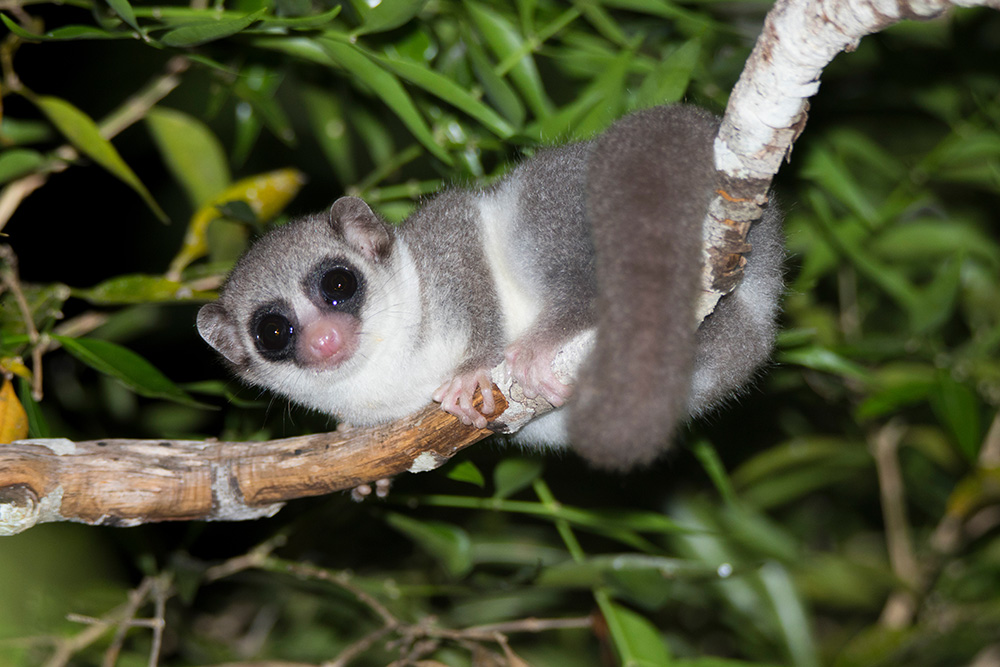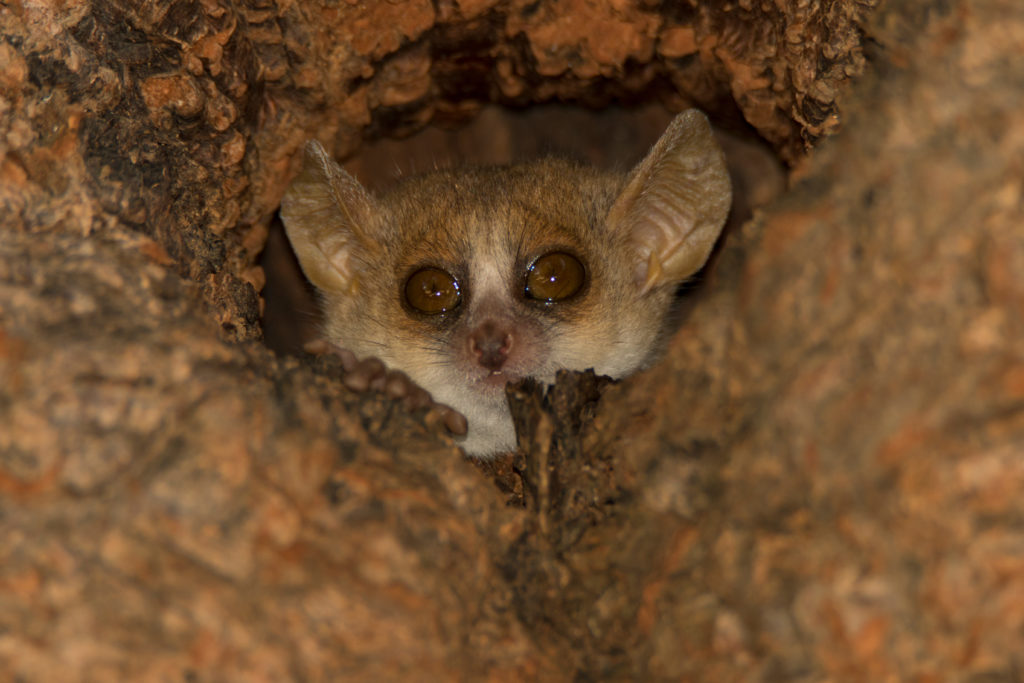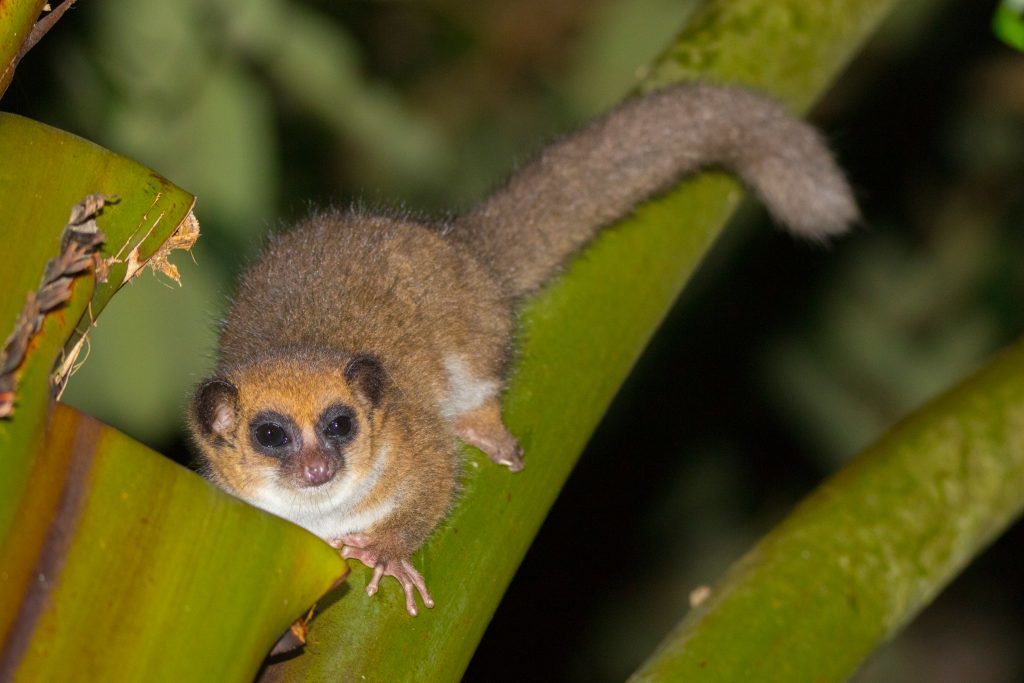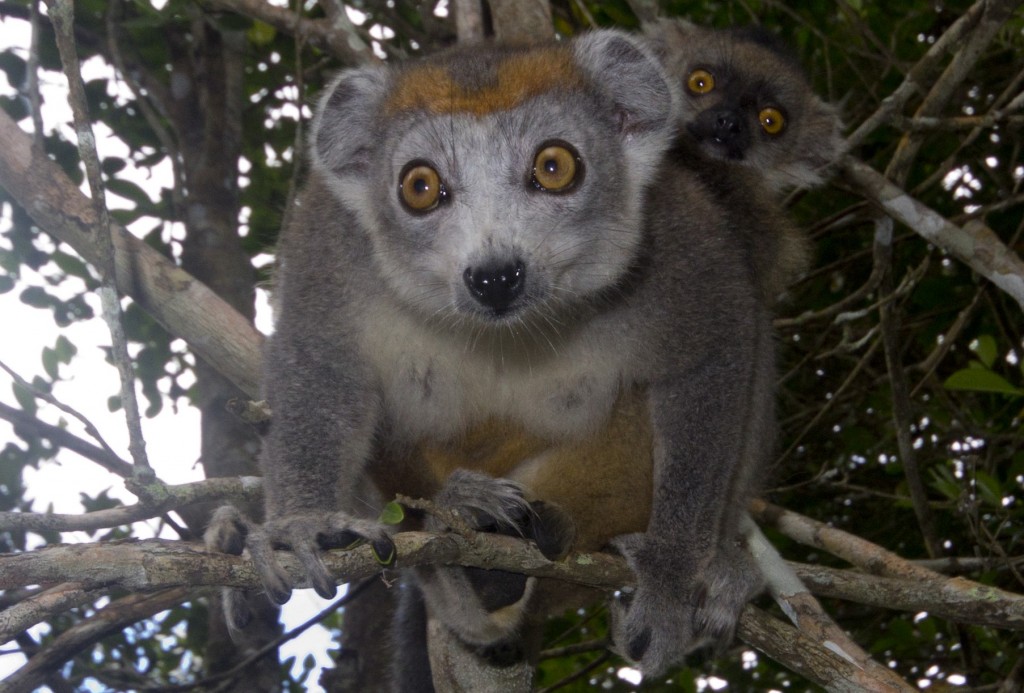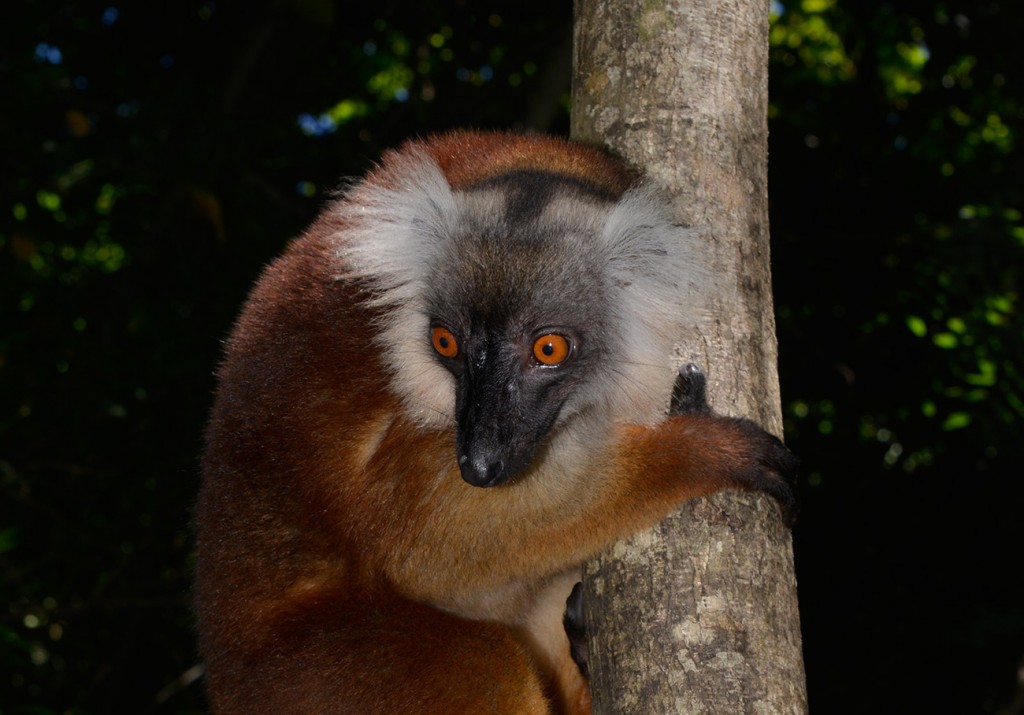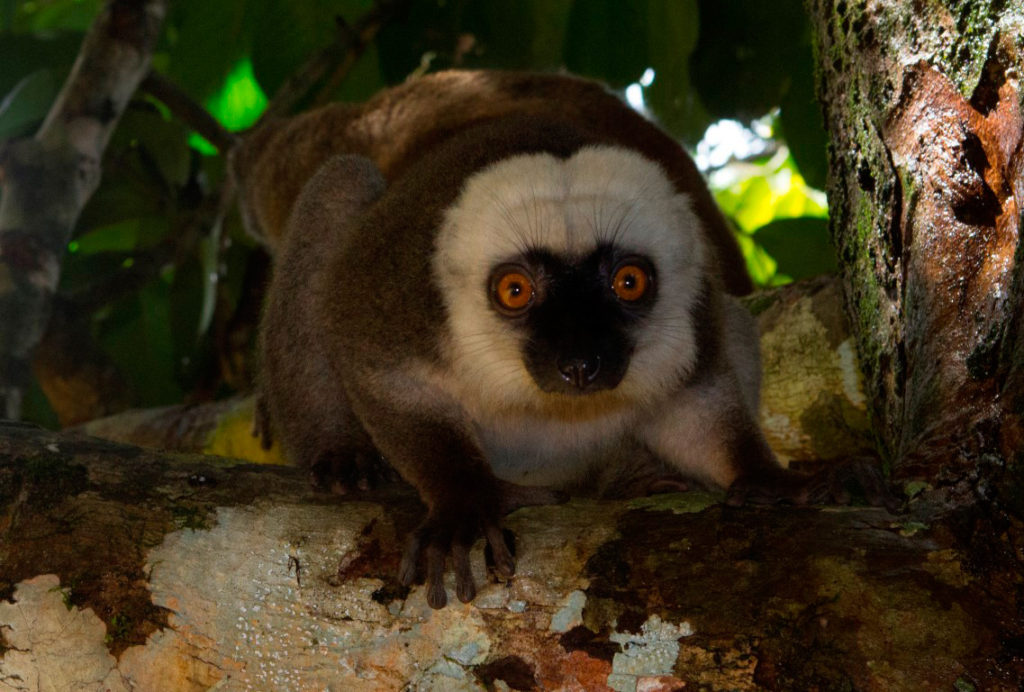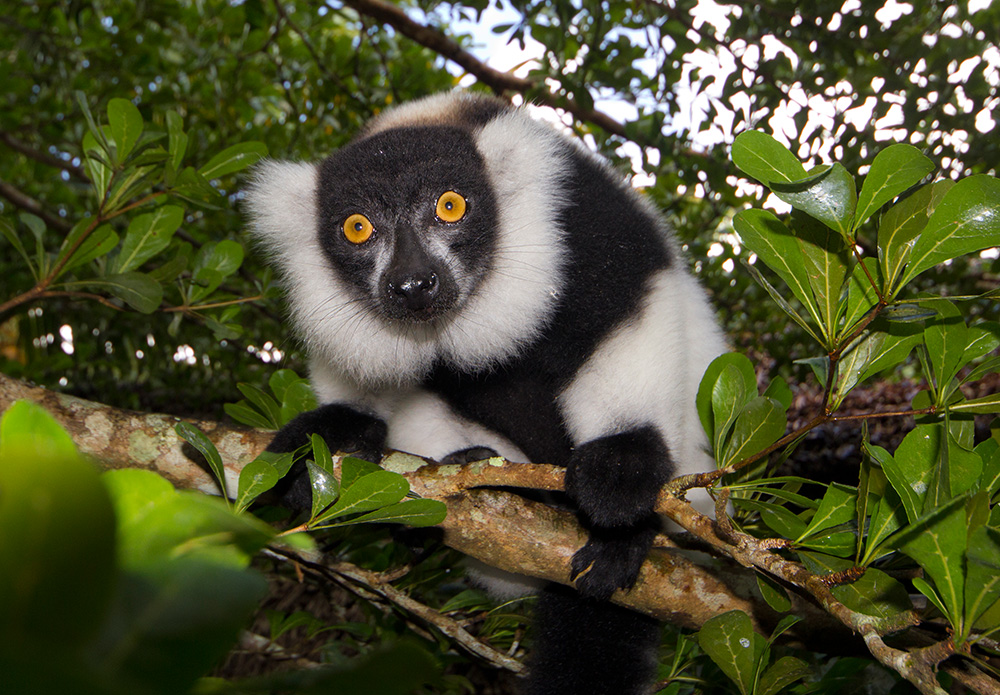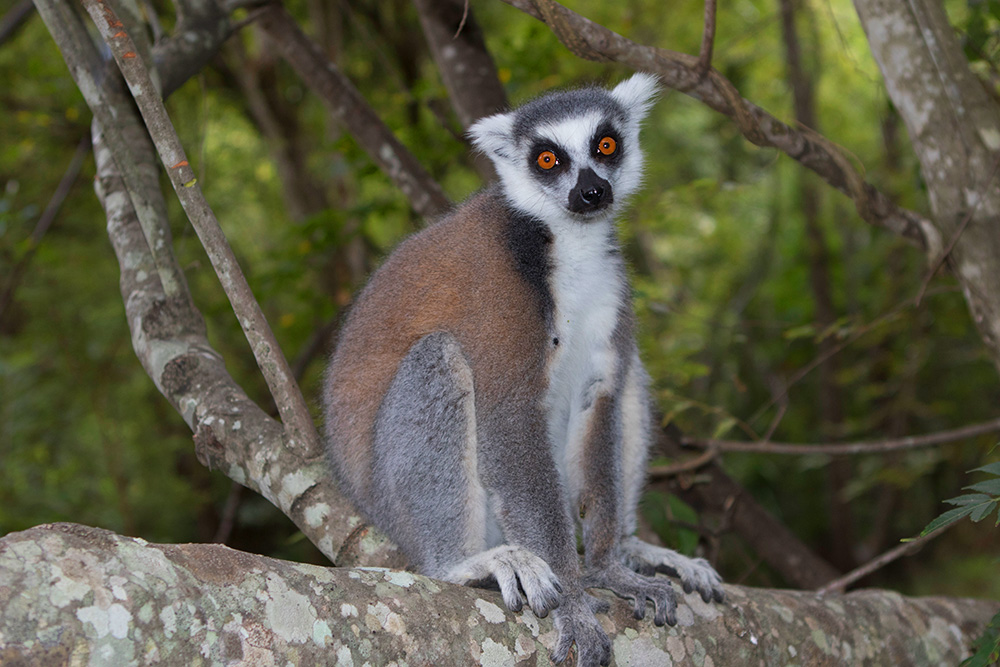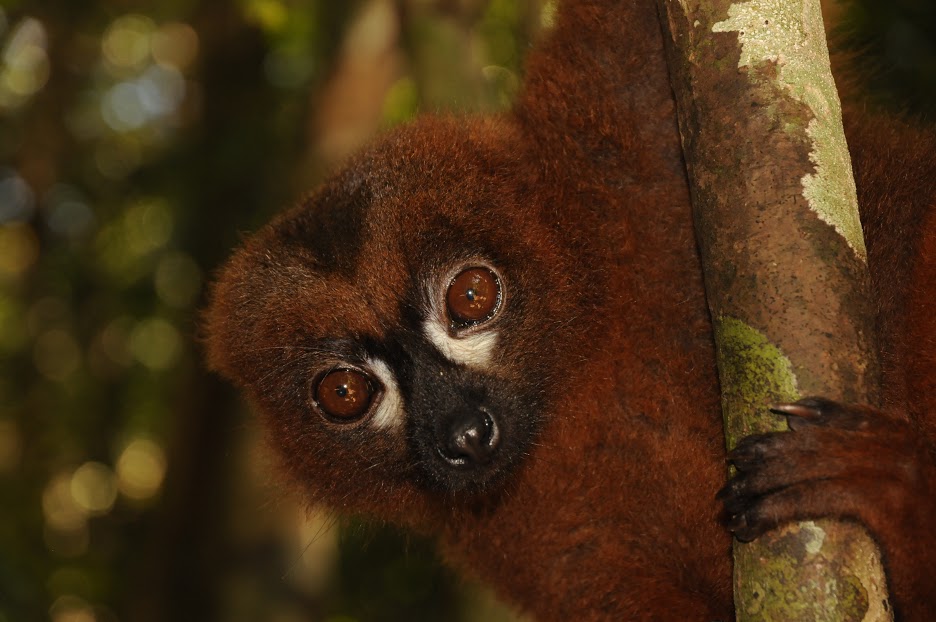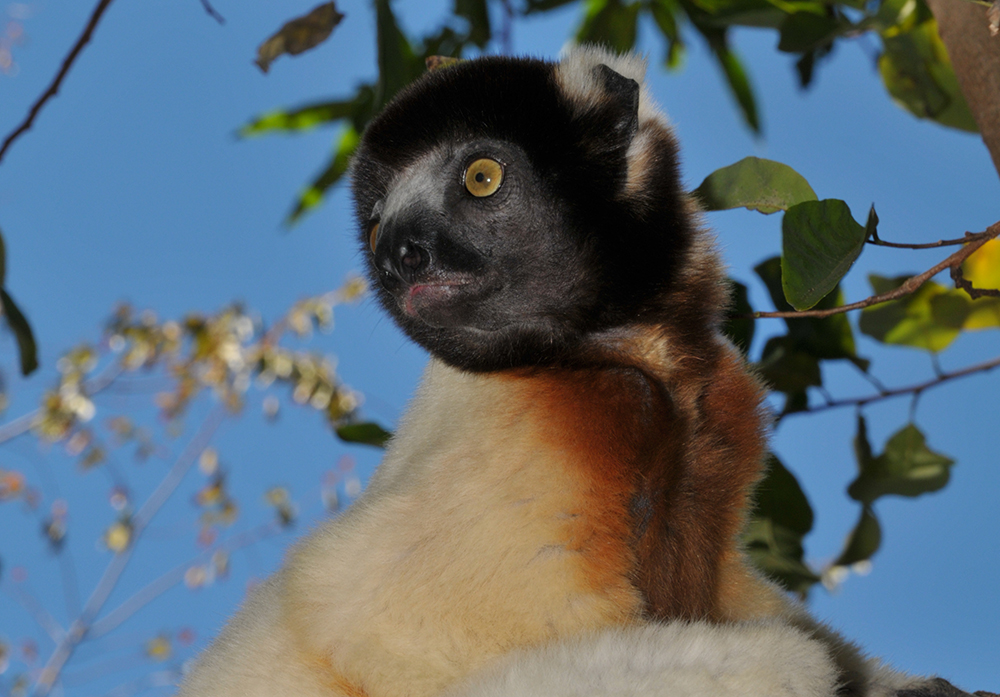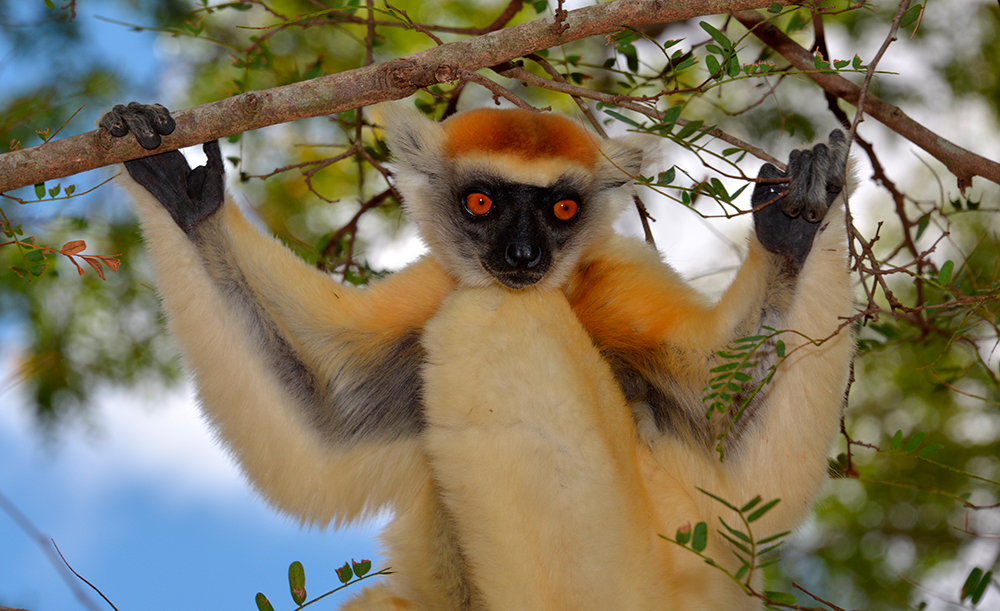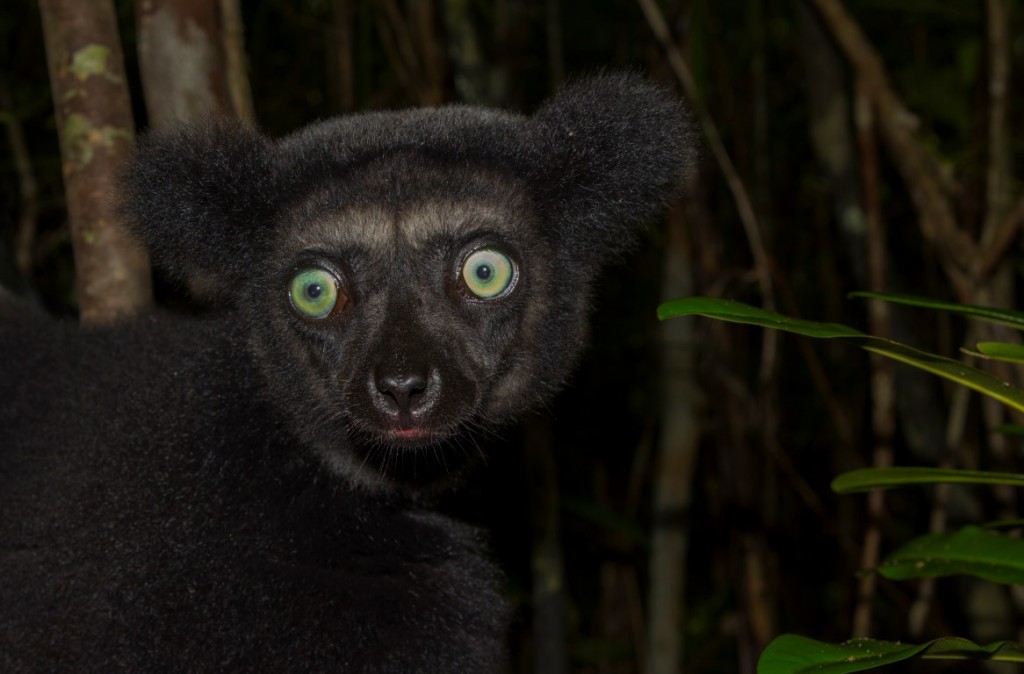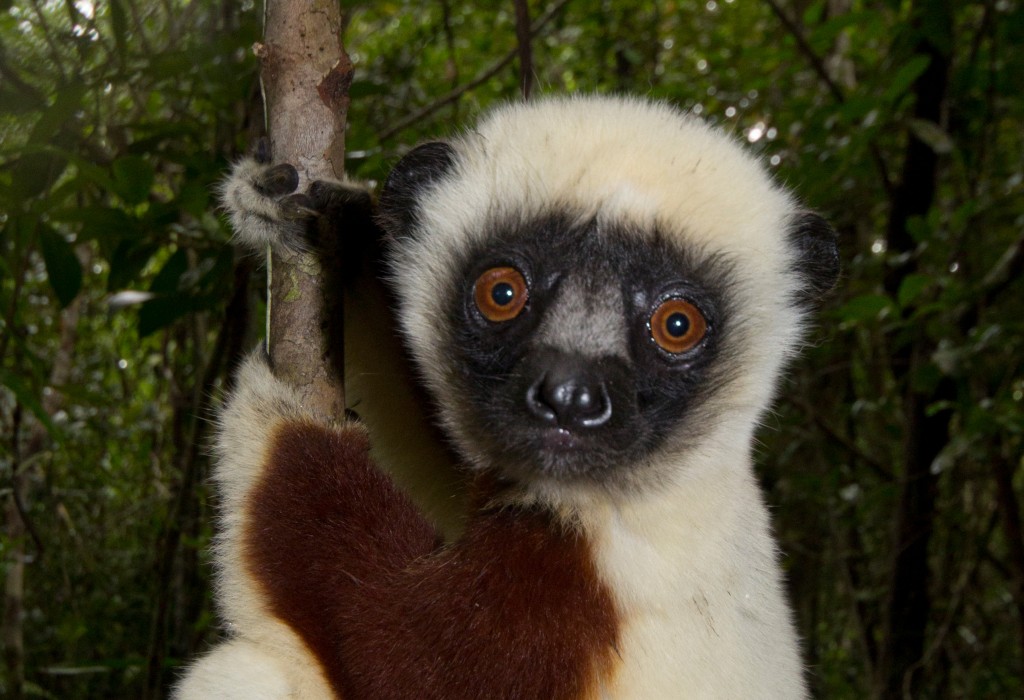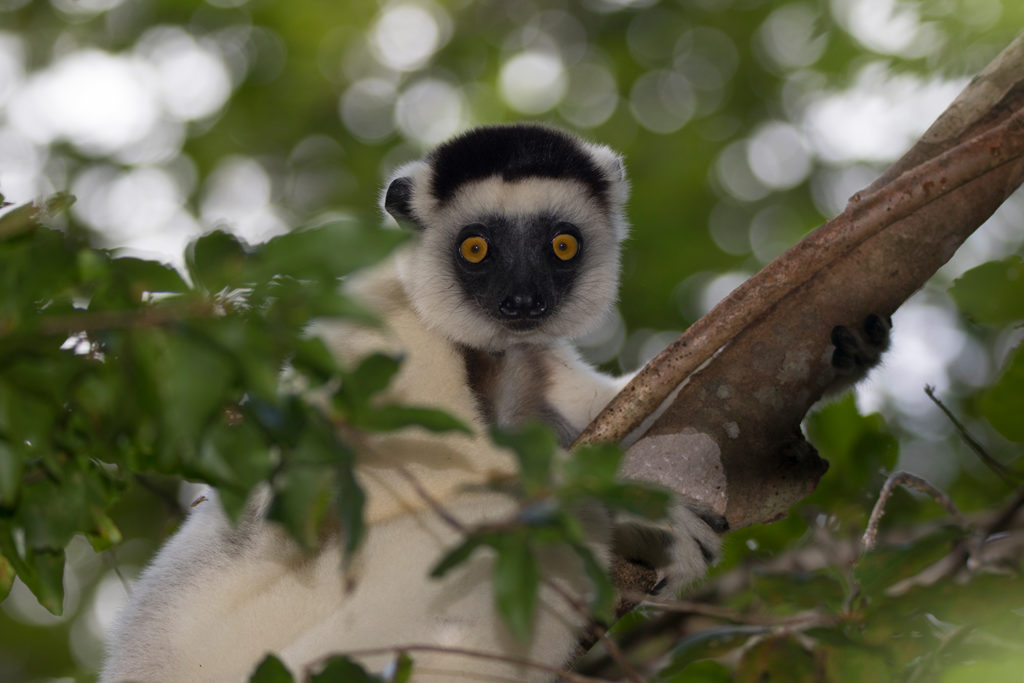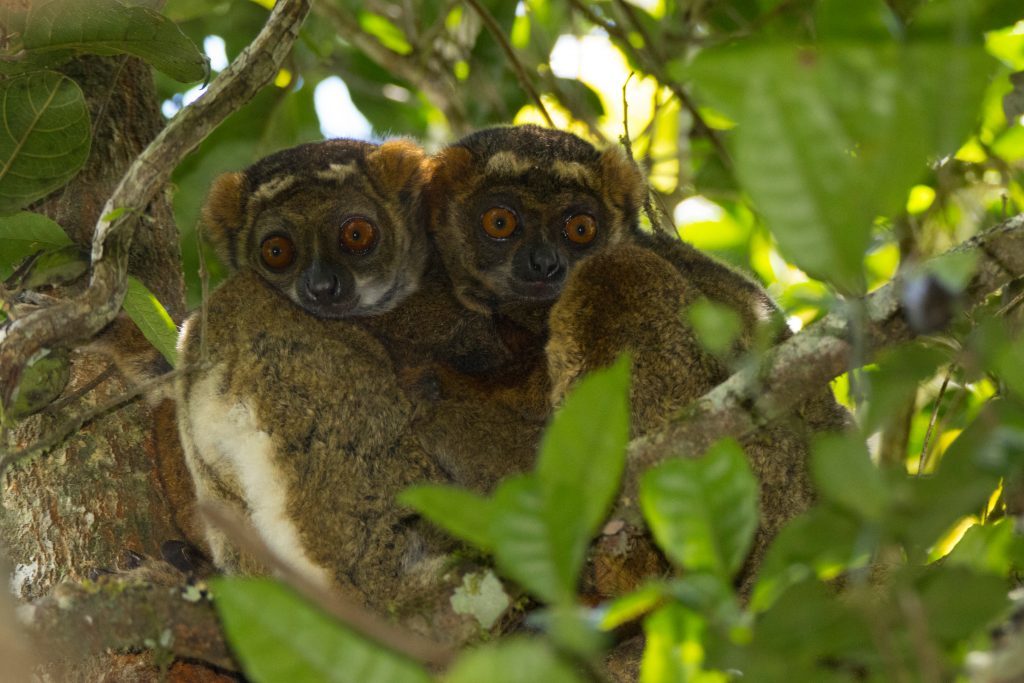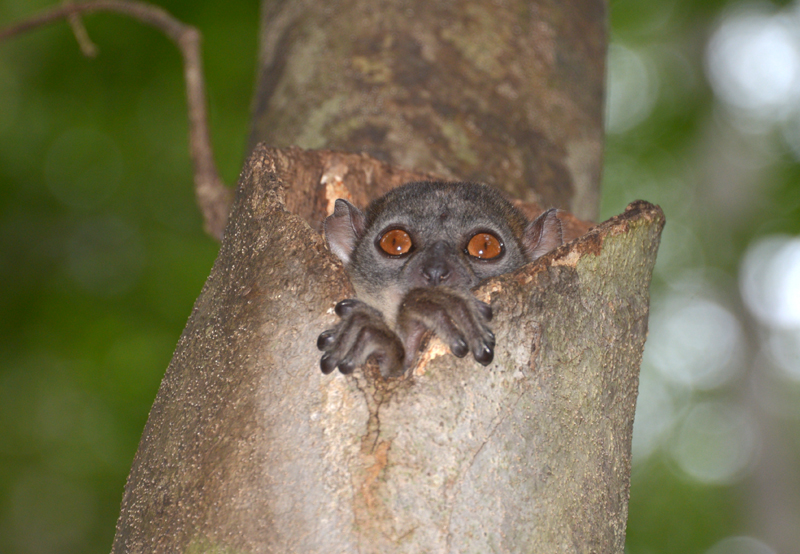Lemurs are probably Madagascar’s most famous mammals – not for nothing because they originally exist only there and nowhere else in the world. They belong to the strepsirrhine primates and are divided into about 100 different species. The word lemures comes from Latin and refers to the spirits of the dead of ancient Rome, who have little resemblance to the cute lemurs of today with the exception of their big eyes.
Lemurs mainly populate forests, but these can be dry forests as well as spiny or rainforests. Activity and nutrition are just as a variable – some species eat only leaves and fruits, others like to supplement their diet with a few insects or even birds. With a bit of luck, you might see lemurs leaping between the treetops in the many national parks or hear their excited calls in the morning. In some regions, they are curious enough to approach humans in the wild within a few meters. With a few exceptions, lemurs live together in groups or pairs – and show pronounced social behavior.
Among the recent lemurs, there are four families. On the one hand, there are the so-called cheirogaleids, which are nocturnal and relatively small. To the cheirogaleids belong the fork-marked lemurs, the dwarf lemurs, and the tiny mouse lemurs. The latter can be found almost everywhere in Madagascar jumping around in the trees at night. One of them is Madame Berthe’s mouse lemur, who is not only Madagascar’s smallest lemur but also the world’s smallest primate, weighing only 30 g. One finds unusual however also with other types: The fat-tailed dwarf lemurs for example as only primates keep a kind of hibernation during the dry season.
A second family of lemurs is the actual lemurs or Lemuridae. They include well-known species such as red and black and white ruffed lemurs, which can be found in zoos around the world. The mascot of Madagascar, the ring-tailed lemur, also belongs to this family. He is an exception, as he mainly lives on the ground instead of in the trees. Among the actual lemurs, of course, one also finds all the small and common lemurs of moderate size. These include brown lemur, crowned, blue-eyed, black, red-fronted, and red-bellied lemurs. Bamboo lemurs are similarly small and widespread and specifically adapted to their habitat. As the name suggests, they can feed on bamboo, although bamboo contains enormous amounts of prussic acid. In doing so, they destroy quantities of prussic acid that could kill a human without any problems. How exactly the cute lemurs render the poison in their food harmless is as yet unknown. What is fascinating, however, is that each species of bamboo lemur eats a different part of the plant. Some eat the leaves, some eat the flowers and buds, others prefer shoots.
The third family of lemurs is the Indriidae. They include the nocturnal and during daytime perfectly hidden wooly lemurs and Madagascar’s largest lemur, the Indri. With its loud, through the forest resounding songs, it probably remains most impressively in the memory of most travelers. The gentle giants of the red island weigh up to 10 kg. The second-largest lemurs of the island, but unfortunately all already threatened with extinction, are the Sifakas. They include nine species: the Silky Sifakas, which are also called the angels of the forest, the Diademed Sifakas, Edward’s Sifakas, the bearish Coquerel’s Sifakas, Van-Decken Sifakas, Crowned Sifakas, Verreaux’ Sifakas, and Golden-Crowned Sifakas. The Black Sifaka is one of the rarest primates in the world. The species has fewer than 155 individuals still alive, the absolute last of its kind.
The fourth and last family of lemurs are the sportive lemurs. They are nocturnal, during the day they can be found oversleep blinking from their tree heights. Each region has its own kind of sportive lemur.
An outsider among the lemurs and a very bizarre representative is the Aye-Aye, a very special and extremely rarely visible forest inhabitant. With its large, yellow eyes, shaggy hair and overlong middle finger, the Aye-Aye looks like a bizarre, nocturnal mythical creature. Anyone who ever sees this creature in Madagascar is lucky.
The variety among Madagascar’s many lemurs is enormous. Each species has its own special features and its own ecological niche into which its habits fit. Unfortunately, however, not only the Sifakas are strongly threatened. Their habitats are dwindling further and further due to slash-and-burn, deforestation, and settlement development. Some species are hunted for consumption, others like the Aye-Aye are deliberately killed as soon as locals find them, but little is known about their social structure, communication, nutrition, or reproduction. There is still a lot to research and find out, photograph and document here. Madagascar’s forest spirits are waiting!
 MADAMAGAZINE Your Magazine about Madagascar
MADAMAGAZINE Your Magazine about Madagascar

